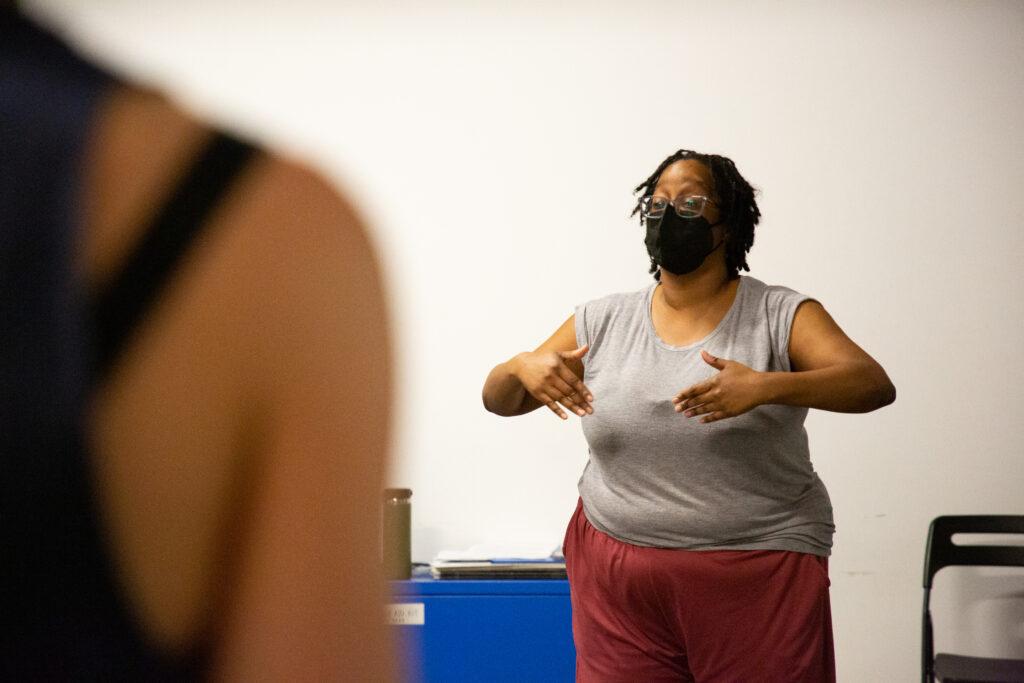Lately, the dance world has grown and altered “in actually cool methods,” says India Harville, the founder and government director of incapacity justice performing arts group Embraced Physique. “We’re seeing extra BIPOC dancers, and fats dancers, and queer dancers, and Disabled dancers.”
What’s nonetheless lacking, in keeping with Harville, is the acknowledgment that many artists, like herself, exist throughout a number of of those identities directly. “Plenty of occasions, you’ll be in a single area designed for disabled our bodies that gained’t have consciousness round race,” she says. “Otherwise you’ll be in an area that’s queer-friendly however doesn’t have a politic round fatness.”
With How We Transfer, a brand new intensive for dancers 18 and older, Harville and her collaborators hope to create an area the place Disabled, multiply marginalized artists can discover group, company, and artistic energy. These collaborators embrace Kayla Hamilton, a performing artist and the inventive director of Circle O, a cultural group geared toward uplifting multiply marginalized creatives; JJ Omelagah, a sound artist and this system director and entry doula for Embraced Physique; and New York Metropolis studio Motion Analysis. Funded by the Mellon Basis, How We Transfer will start with digital periods in March and Might, adopted by a 10-day in-person intensive in New York Metropolis in June, then a ultimate digital weekend in August.
“We’re serious about what occurs once we deliver multiply marginalized artists from the margins into the middle, outline our personal areas, and discover how we transfer collectively,” says Harville. “That’s actually the artistic query behind the work.”

How We Transfer is the results of a few years of analysis, says Harville. “We’ve all had alternatives to discover a few of these ideas collectively in different places,” she says. “Now we’re taking what we’ve discovered collectively and placing it into this program, and the individuals who come by means of this system can even contribute to that information base. It’s group work and collaborative work.”
A method that How We Transfer is designed to be really accessible: Not solely will the accepted individuals have their journey, housing, and meals prices absolutely coated (funds are additionally accessible to cowl these artists touring with Private Care Attendants), however every can even obtain a $2,000 stipend. “That felt actually necessary, as a result of multiply marginalized people are sometimes actually hustling to outlive, and that may make it troublesome to make artwork,” says Harville.
How We Transfer will likely be formed for and with its six individuals—chosen from a spherical of purposes in October—throughout the digital periods. “Multiply marginalized people aren’t at all times afforded plenty of company, so we actually wish to let the invited dancers select their very own journey and construct one thing,” says Harville.
Because of this, lots of the specifics of the intensive are nonetheless to be solidified. However Hamilton says it’ll possible embrace courses, workshops, or experiences provided by the individuals themselves; breaking bread collectively and community-building; and courses taught by non-Disabled dance artists, adopted by suggestions periods on how they’ll make their courses extra accessible.
Not like intensives that worth candidates’ resumé credentials or efficiency movies, How We Transfer will prioritize artists who’re curious and keen to construct a group of Disabled dancers. “Traditionally, there have been plenty of intensives that require that you’ve got carried out on a selected type of stage or had a selected type of expertise,” says Harville. “Typically multiply marginalized dancers don’t have easy accessibility to that.”
The collaborators are planning a second cohort of How We Transfer for 2026, which they hope will likely be open to worldwide artists and embrace extra individuals. “One of many predominant impacts I wish to see out of this program is a stronger community of Disabled dancers who acknowledge their brilliance and really feel empowered to deliver their contribution to the dance world in an even bigger approach, with extra assist beneath them,” says Harville. “I hope this program spawns others prefer it, and that there’s a larger-scale change within the dance world in order that together with multiply marginalized dancers turns into the norm.”

